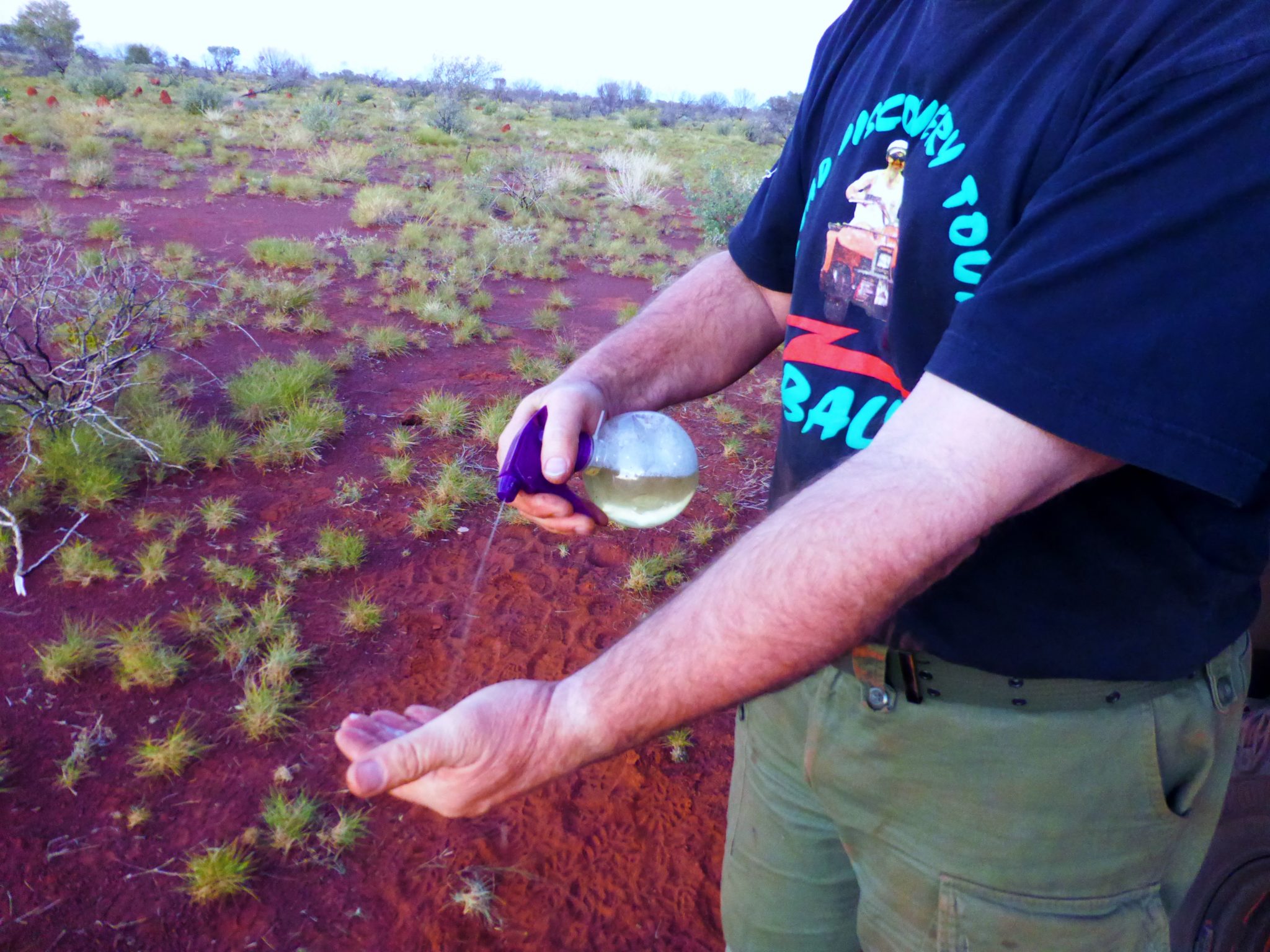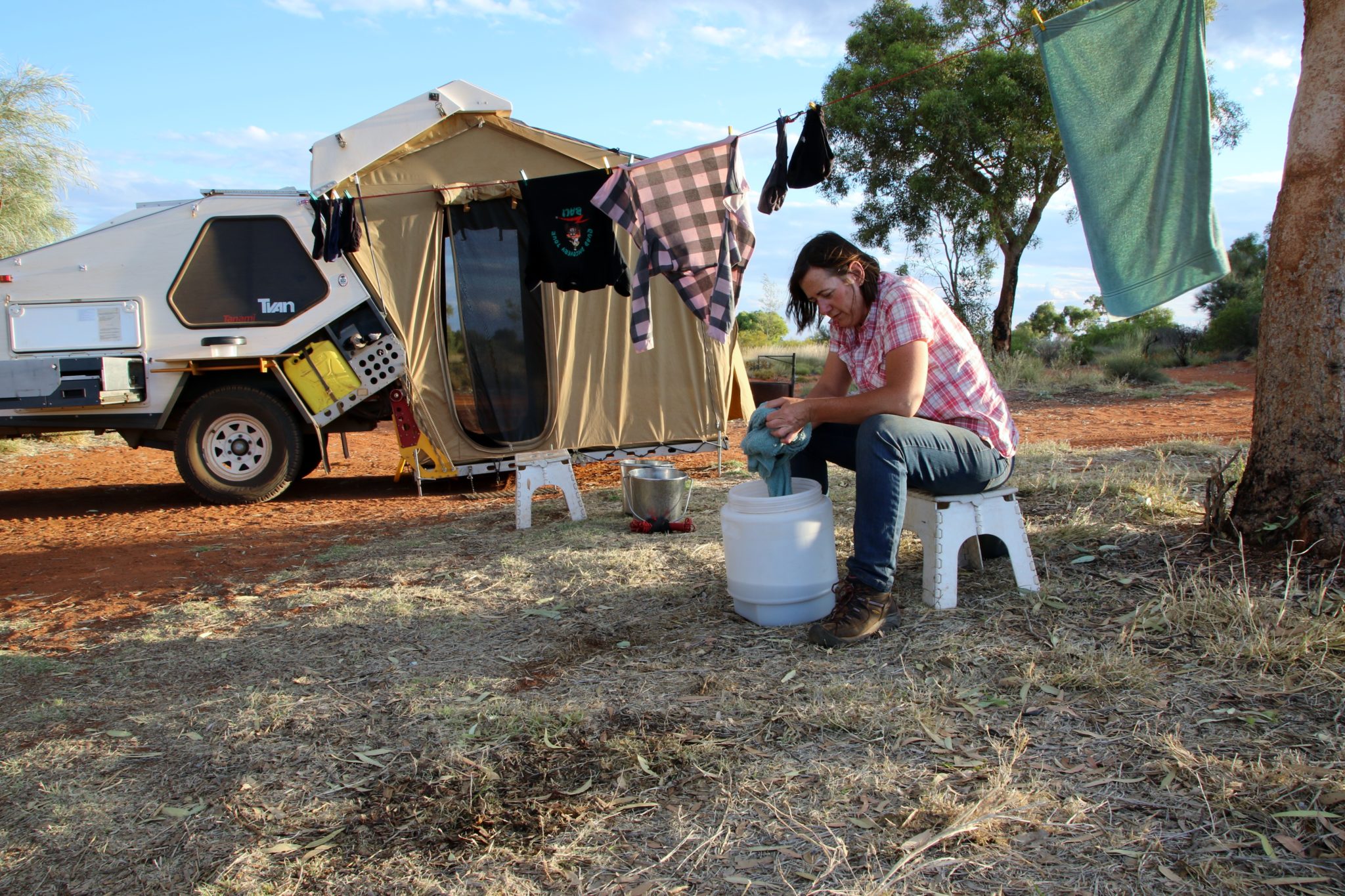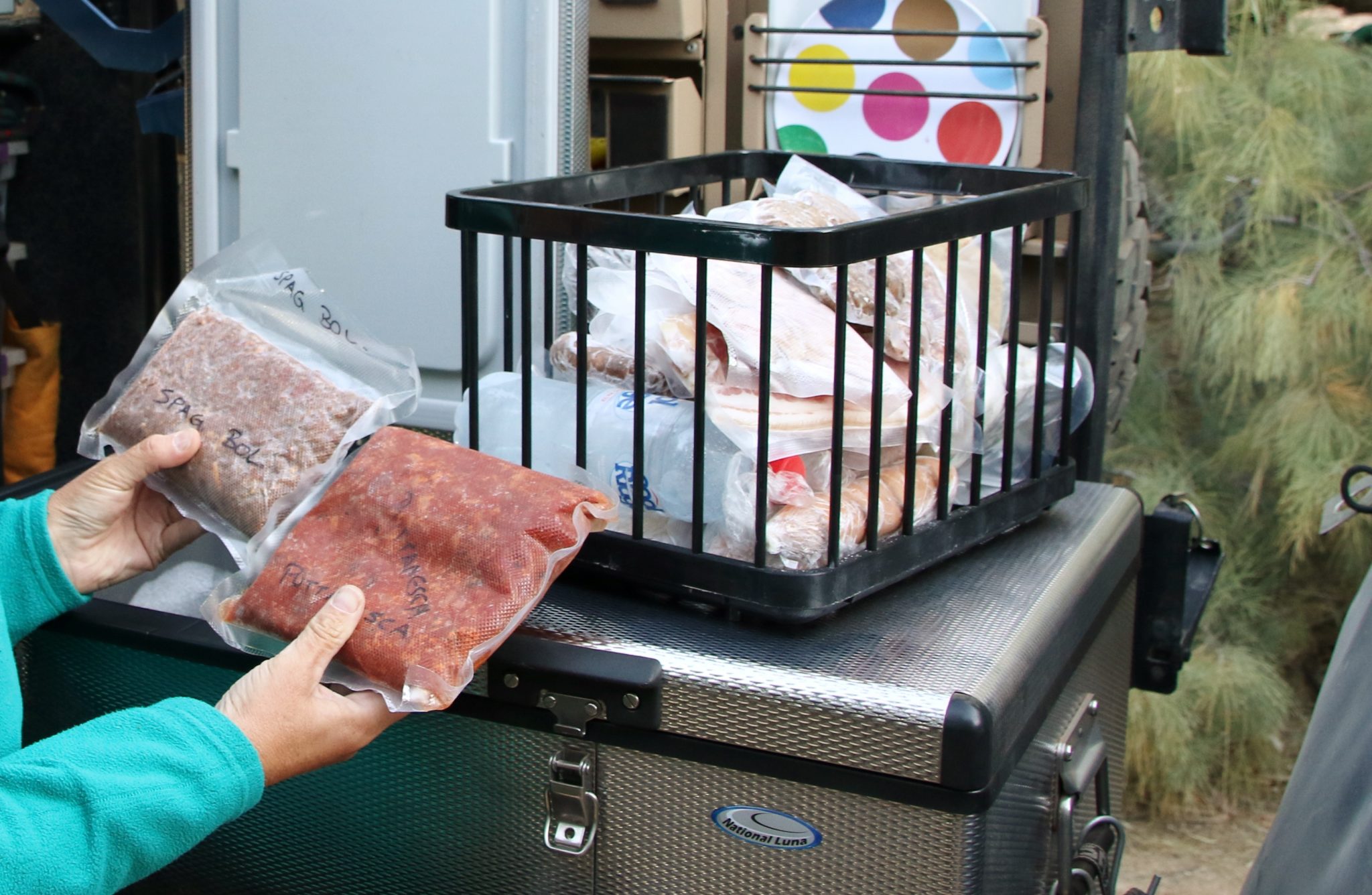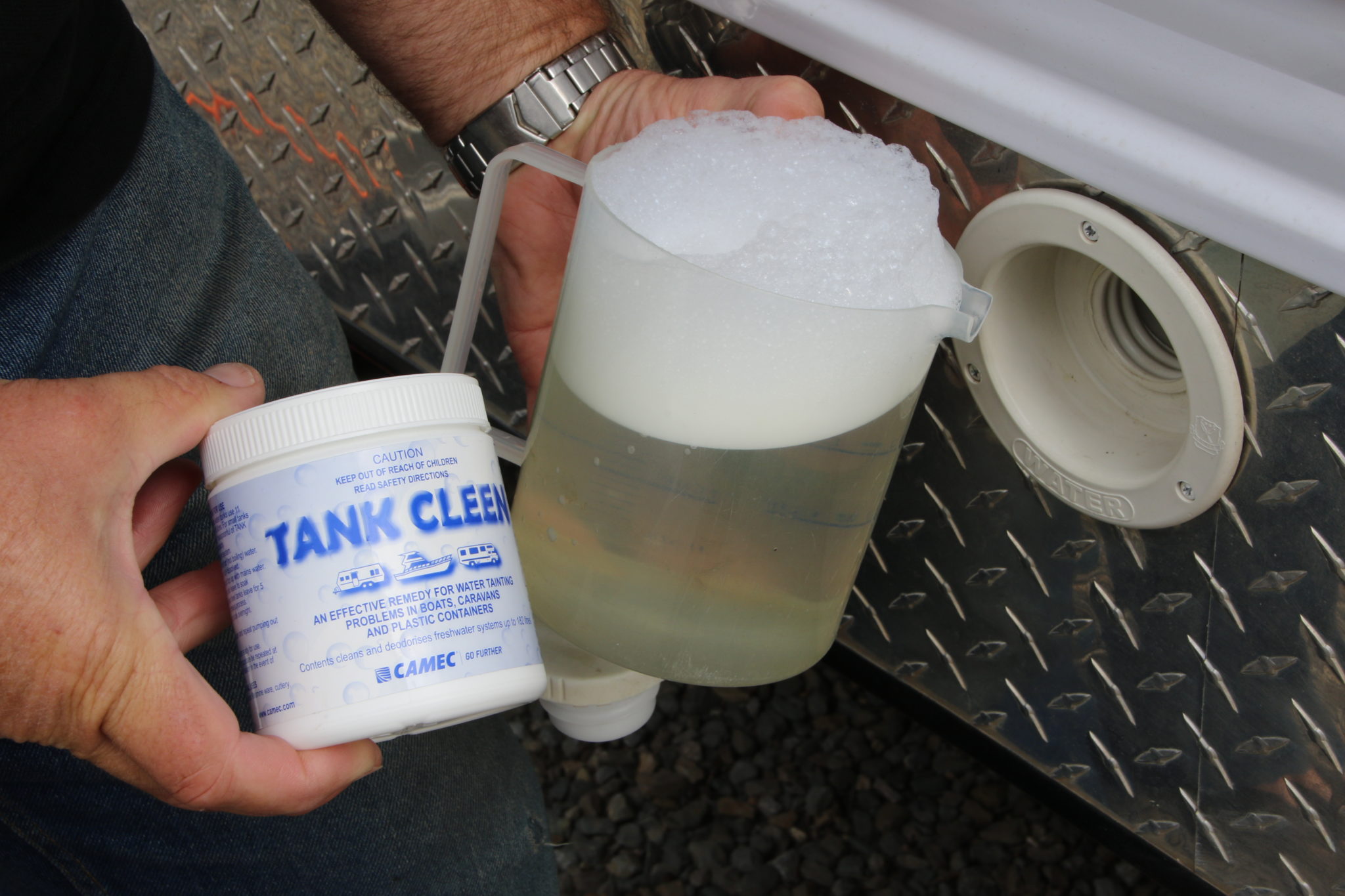It doesn’t matter where you live around the country, we all recognise that water is a precious commodity. So much so, that you may have even experienced the devastating effects drought has had in many parts of Australia first-hand. It’s for this exact reason we take our water usage very seriously when travelling, and it’s everyone’s responsibility to play their part in reducing water usage.
No doubt there are places that can get seriously inundated with water, but you can’t simply have the attitude that water will always be easy to come by when travelling. We’ve had to become smarter in how we use it, especially when we want to continue visiting some of the remote destinations we choose where water is scarce. Here’s just ten ways for starters, to give you the water-wise mindset.
1. Spray Bottles
Carrying a number of these is a sure fast way to quickly save water when travelling. Keep a mix of liquid soap and water in one bottle which you can easily use to wash grubby hands with just a few squirts. Fill another bottle with a dishwashing liquid and water mix, and you can use it for non-greasy dishes. It doesn’t get much simpler when you only need to lightly spray your dishes with this mix before wiping them over with some paper towel. Don’t throw away the paper towel as it makes a top campfire firelighter. Use another bottle filled with plain water to use as a refreshing face or body mist spray on balmy nights – call it “bush air conditioning” if you like, but it makes a big difference.
2. Wipes
While baby wipes have been around for years, they make an excellent choice for people of all ages to have a quick wash when water is scarce. There is no doubt they don’t replace a full-on shower, but they can significantly help to reduce that sticky or dusty feeling when you’re out camping. Be mindful that not all wipes that claim to be biodegradable actually are, so ensure you dispose of them properly. We’ve also found alcohol wipes are another good way to clean a small amount of dinner dishes. They’re not only lightweight for packing, but they burn easily when you’re ready to throw them out.
3. Washing
If there is one thing that can be a real chore when travelling, it would have to be washing clothing and other items. However, if you’re travelling for long periods, nine times out of ten, it’s something we can’t escape. Whether you’re travelling with some form of washing machine in your caravan, or using some other method while camping, this chore can easily suck up a significant amount water. By switching to either some low suds washing powder or liquid, or even a wool wash, it can help reduce the need for rinsing, and that alone will significantly save litres of water per load. After washing the items, simply wring out and hang out to dry.
4. Showering
For many campers, showering out on the tracks can be a luxury, especially when travelling remote. But that doesn’t mean you need to forego hygiene! Even travelling with a simple flannel and a small amount of water can do the job on most occasions. However, if your setup includes a shower, avoid constantly running the water. These days we use a garden sprayer while remote camping for that reason, as they’re a fantastic way to control the water flow. Simply get wet before soaping up, and follow it with a quick rinse. You’ll be amazed that it can all be done in a couple of litres.
5. Grey Water
You’ll soon learn with a water-wise mindset that you don’t let water go to waste. Whether there’s one of you travelling or a large family or group, you will gather grey water from either washing, showering or doing dishes at some stage. So don’t let the grey water go to waste – collect the water from showers by standing in a tub of sorts, or use other grey water to extinguish a campfire before packing up. While many people simply cover their campfires with dirt or sand to extinguish them, using the grey water to fully extinguishing it is a more effective method.
6. Cooking
As much as we love to cook, there can be times when travelling where you’re after a quick and easy meal, yet still nutritious. This is where one pot meals work really well, as they save on both time and water required for dishes. For this reason, we like vacuum sealed meals, as they’re nutritious meals that we’ve cooked before leaving home and frozen, that are simply heated in boiling water for less than ten minutes when needed while travelling. This method leaves both the pot and water clean which can be re-used for something else. If using the camp oven for cooking while travelling, wipe out as much of the leftovers as possible, and use damp paper towel and a spray bottle to clean it. Travel with paper plates as well to reduce the water required for dishes as they can easily be burned.
7. Saving Rain
For the times you travel remote, having the ability to collect water from your RV’s footprint just like a house roof with gutters, can easily extend your time out on the tracks. While some RVs come with this feature built into their design, many don’t. One option is to angle your awning and/or fly so that the water runs off directly into a bucket, but the easy to use Original Rain Saver Gutter product makes this all so simple if you have a fold out awning. You will need to consider the quality of the water that’s captured as to whether it’s suitable for drinking, but if not, the water collected could certainly be used for a multiple of other chores.
8. Cleaning Tanks
To prevent unwanted bugs, mould and other nasties living in your water, it’s important to keep your water storage vessels in a healthy and hygienic environment by regularly cleaning water tanks. While there are many different types of products on the market and numerous home remedies, we’ve been using Tank Cleen for some time due to its simplicity. By partly filling the water tanks and adding the recommended dosage of the cleaner, we only need to drive with it slopping around in our tanks while we’re on our way home. We then drain and rinse the tank once we’ve arrived home and let it air out. Before you know it, we have a perfectly clean tank. Tip – Run the solution through all your plumbing when draining the tank to also flush the lines.
9. Inspect for Leaks
Avoid travelling with water pumps turned on because in the event of any issues, pressurised lines means you won’t know you’ve got no water until it’s too late when you’ve stopped. However, before setting off, turn your pump on to pressurise the system and check for any leaks. Keep the pumped switched off until a tap is turned on. Should the pump run periodically, it may pay to have a good close look around the RV for any potential leaks or weeps, and check for any signs of water marks. Simply park your RV on flat dry ground to help spot the leaks, and look underneath, as many of the manufacturers leave pipes exposed which makes them susceptible to damage from road stones flicking up.
10. Filling Tanks & Portable Vessels
Water isn’t always easy to come by when travelling remote, so you need to be prepared with a range of fittings and clamps to fit all sorts of valves and taps as water quality can be affected by the pipes and hoses used. Aim to only use food grade type hoses with a filter for filling drinking water tanks where possible. This will prevent the plastic/rubber type taste in your water storage vessels that can otherwise be experienced by using other hose grades. Tip – When it comes to water tanks and storing your RV, there are two schools of thought – one is to fill water tanks to the brim so no air can get in, or two, leave them completely empty so no bacteria can form in small warm pockets of water.
So the next time you’re hitching up the camper and taking off on your next adventure, have a think about how you can save some of your water. You never know, one day your life might just depend on it.
As published in RV Daily, 13




